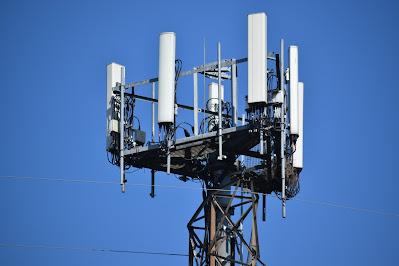Javed Ali.
In the 5G race, China has made a new headway by launching the service commercially. The new-age, cutting edge, high-speed communication is now available in 50 cities across the country.
The service is only available in selected areas in the other two countries – the United States and South Korea – that offer 5G so far. Its grand rollout in China last week is unmatchable with what the others have achieved so far.
The 5G tussle
The launch comes against the backdrop of US efforts to challenge China’s 5G ambitions. When President Donald Trump said that “the race to 5G is on and America must win”, he probably wanted to reach the finishing line first by not letting his competitor play. As he banned Huawei, the leading Chinese 5G infrastructure provider, from acquiring US technology and from letting it deploy its network in the US, China’s plans appeared to have hit a wall.
Huawei’s profits received a blow after the US ban but did not fall to a level where they could hamper its deployment plans. Not all countries share the US’s concerns about the possibility of backdoors in Huawei’s hardware and have decided to continue contracting the company.
Huawei teamed up with China’s state-owned telecom operators, China Mobile, China Telecom and China Unicom, to bring 5G services to their subscribers inland and signed 60 contracts with carriers in other parts of the world.
The 5G race is not a zero-sum game
As against the beliefs of President Trump, the 5G race is not something where a country has to lose for the other to win. The world is merely undergoing a technological upgrade that is, naturally, resulting in a competition. But history explains that 5G can be adopted through global cooperation just like technological upgrades of industrialization, computers and the internet were.
Foundation of the ultimate medium of connectivity, the internet, lies is international collaboration. As we are increasing the speed of our connections with each other and with things, the need for working together is all the more important.
The battle for technological supremacy stems global growth. It disallows developing countries to take advantage of the latest advancements in overcoming their problems. It also causes a diminishing of the cooperative spirit among the scientific community for employing their gains in tackling the day’s challenges.
Europe is very much cognizant of this fact. It refused to ban Huawei despite extensive pressure and continues to partner with Chinese companies for the 5G deployment. There is a learn-learn approach in their collaborations, lifting industries of both regions.
China’s acceleration of self-reliance
An unintended consequence of the 5G tussle between the US and China was an acceleration of the latter’s self-reliance efforts. Already acquiring an edge in the field of 5G, Chinese companies are now aiming to improve their chip-making capabilities. Since China is a major supplier of rare earth materials, it is only a matter of time that the hardware expertise of local companies rises at par with those in the US.
Even the commercial launch of 5G services has been ahead of the schedule. Previously planned for release in 2020, last week’s announcement by the state-owned telecom operators came as a surprise for many industry observers. The acceleration of self-reliance efforts was not anticipated to be progressing at this pace.
An innovative edge
A major contributive factor in China making headway in 5G is innovation being a national policy. Although the service has been commercially launched just now, it has been in medical and research use for quite some time. Hospitals and medical institutions have been using it to carry out remote surgeries and intelligent locomotive systems have been using it to transmit data to their analyzing systems.
Owing to the innovation drive, top Chinese phone makers Huawei and Oppo have launched 5G enabled cell phones. US-based Apple is, however, yet to announce one.
That’s because China has a clearly defined roadmap of how it wants to leverage innovation to be the global tech leader. A plan released in 2016 states that by 2030 it will be able to achieve its aim.
The 5G race is not for a single country to win. It is the future of how mankind will connect. One nation’s win can be that of another as well. The need is to disengage from impeding achievements of perceived rivals and move forward with a joint multinational strategy.




